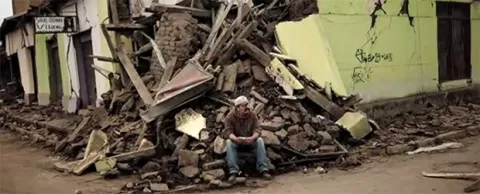
A lot of times, it can be a struggle to get things done. Getting the right people in the room, getting them all to reach consensus, can all be roadblocks to progress. That’s why the story of Constitución, Chile is so inspiring. Just three months after a natural disaster leveled much of the city, the community banded together and came up with a new master plan to rebuild.
While the disaster provided a huge sense of urgency that undoubtedly sped things along, the approach the city used to make sure everyone had a voice likely played an even bigger role. And principles of that approach can work for your city now. And if you have any doubts that quality work can be done in 90 days, consider present day Constitución, which as you’ll read below is truly something to behold. — Kevin Ebi
When a devastating earthquake and tsunami leveled much of Constitución, Chile, residents came together and developed a new community master plan in just 90 days. And they did it largely without the Internet and without using tax revenue.
The Brickstarter blog profiled the warp-speed project, which is remarkable considering that Helsinki needed a decade to develop a master plan for a new neighborhood that was mostly vacant. Constitución finished its sweeping plan and built consensus in just three months. Here’s how Constitución did it:
Shortly after the disaster, they opened a community center in town and invited residents to stop by to not only see the progress being made, but also to help shape the work being done. Regular meetings were designed to put everyone in the city — from city leadership and building experts to the citizens themselves — on the same level. The role of experts was completely redesigned. Experts worked as facilitators. They helped shape concepts from brainstorming sessions into workable ideas; they did not dictate what would be done.
Internet access was spotty, so while social media was used to solicit some ideas, it wasn’t the primary vehicle. Weekly town meetings were. To make sure everyone knew about the meetings, organizers drove around town with a loudhailer inviting people. The meetings were packed and lively. Residents congregated around whiteboards to sketch out ideas. The experts served as valuable resources to answer questions and help refine ideas. Passionate debate was not only allowed, but encouraged. Those heated discussions helped identify and shape priorities. And participation remained strong throughout the process; the rebuilding process in many other communities has had strong initial interest but as rapidly lost steam.
The project was paid for by a forestry company — one of the biggest businesses in town. Normally, that would be viewed as a huge liability. Instead, the company was just another participant in the discussions. It funded the work with no strings attached. Any unease about its potential influence quickly vanished due to the way it conducted itself. It ensured that it had no more of a voice than anyone else.
Within four years after the 50-foot (19-meter) tsunami washed away homes and businesses, nearly 500 new homes were built. So, too, were businesses and parks. There is a newly reconstructed foreshore, which gives the public more prime area to enjoy the water and also provides more protection should another tsunami ever hit. Open space and recreation areas are a key feature of all the new housing developments. More riverfront areas were also turned into public walkways and parks. The city is also putting the finishing touches on its new cultural center.
Looking at its new downtown, which is truly something to envy, the city credits its hybrid planning approach. The disaster provided an incredible opportunity for the community to improve its livability and sustainability, and allowing the public to drive the process resulted in a true transformation that simply wouldn’t have been possible if it was driven by politics.
But the public also couldn’t do it alone. The city started the process by preparing a very rough vision that it encouraged participants to attack. This jumpstarted discussion, preventing the citizens from getting stuck in the very first phase. Co-design was what the city called its approach: the city provided guidance and resources to help citizens achieve their vision. It also helped that people came together to discuss issues in public; social media is no substitute for talking face-to-face.
More stories …
Can more citizen engagement increase city revenues?
Dissecting ISO 37120: How voting, women and corruption figure in the smart city standard



